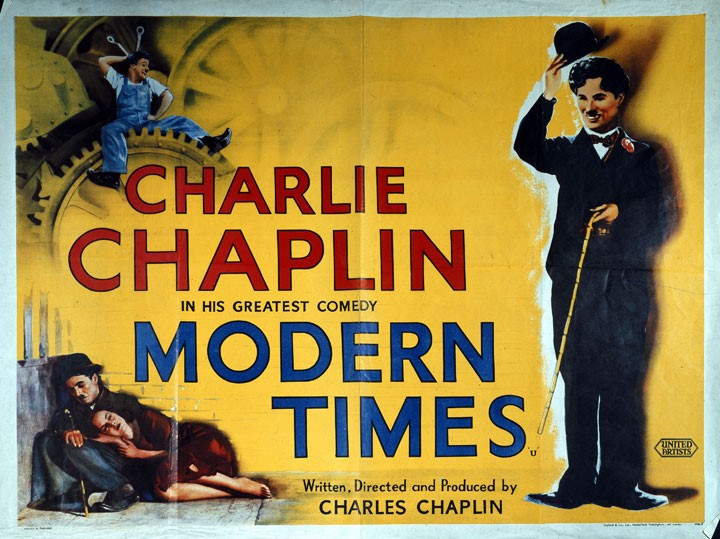Main Content
Lesson 2: The Development of Cinematic Language
Lesson 2 Overview

Introduction
The influence of Chaplin as a character in the history of cinema is hard to overstate. The Pew Center reports indicate that the Little Tramp character is still one of the most universally recognizable icons in all of mass media.
In our previews, we’ll think about Chaplin as a person, his comedic form, and about how he used these in relationship to the talking picture, which was the next big step in the innovation and technological development of motion pictures. We’ll also learn about Chaplin’s early life and view some of his older films. Once we finish watching Modern Times, we discuss the film and its implications on future cinematic language.
Objectives
Here are the objectives for this lesson.
- Describe the role of Modern Times as a social protest film against the synchronized sound film.
- Describe the setting of the film as the Great Depression and list the main concerns that echo the concerns of millions of people at that time.
- Describe the frustration felt by men struggling against dehumanizing effects of the machine in the Industrial Age as depicted in the film.
Lesson Readings and Activities
By the end of this lesson, make sure you have completed the readings and activities found in the Lesson 2 Course Schedule.
Please direct technical questions to the World Campus HelpDesk.
